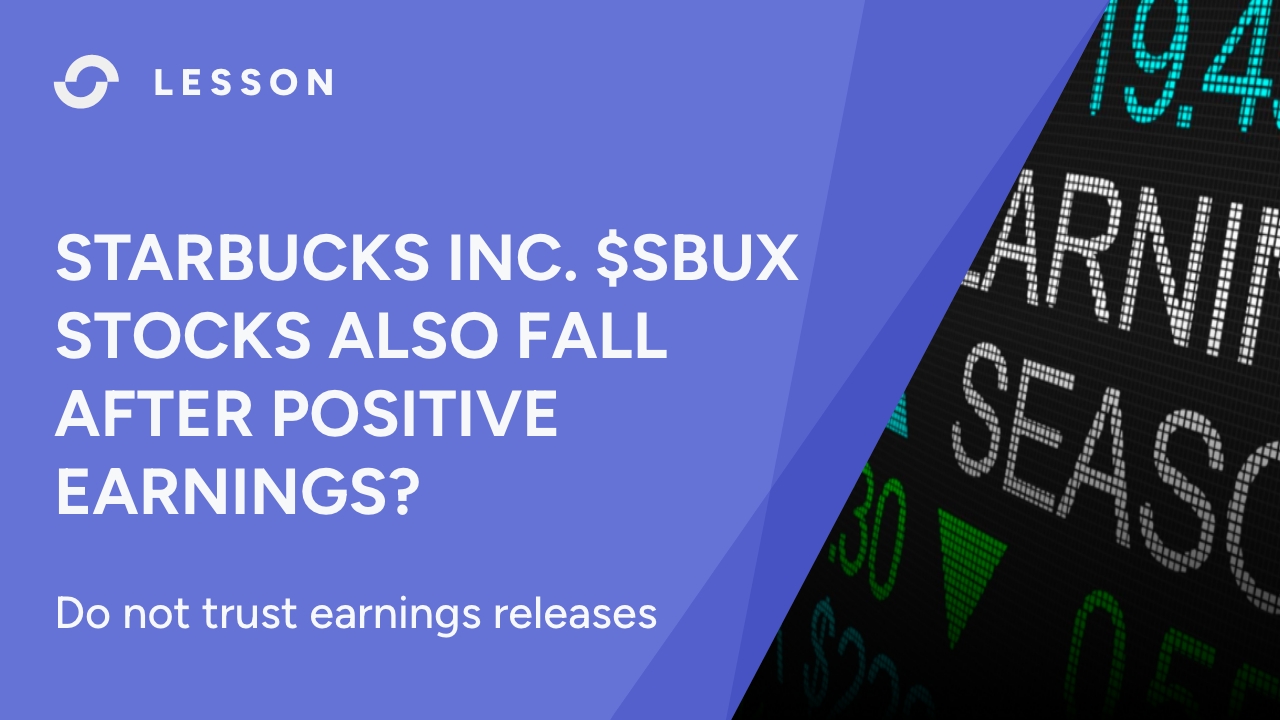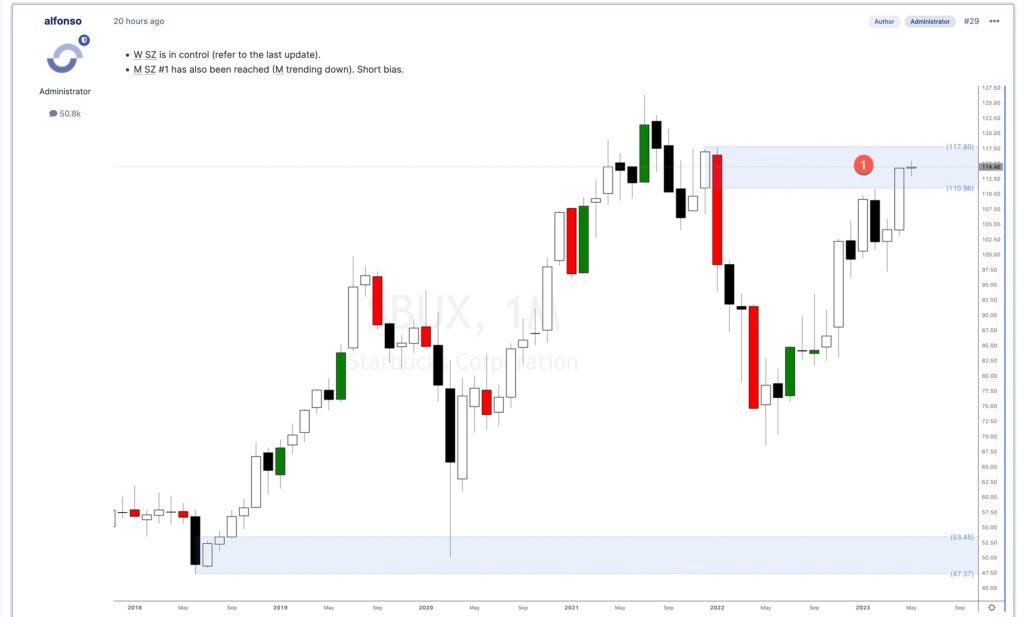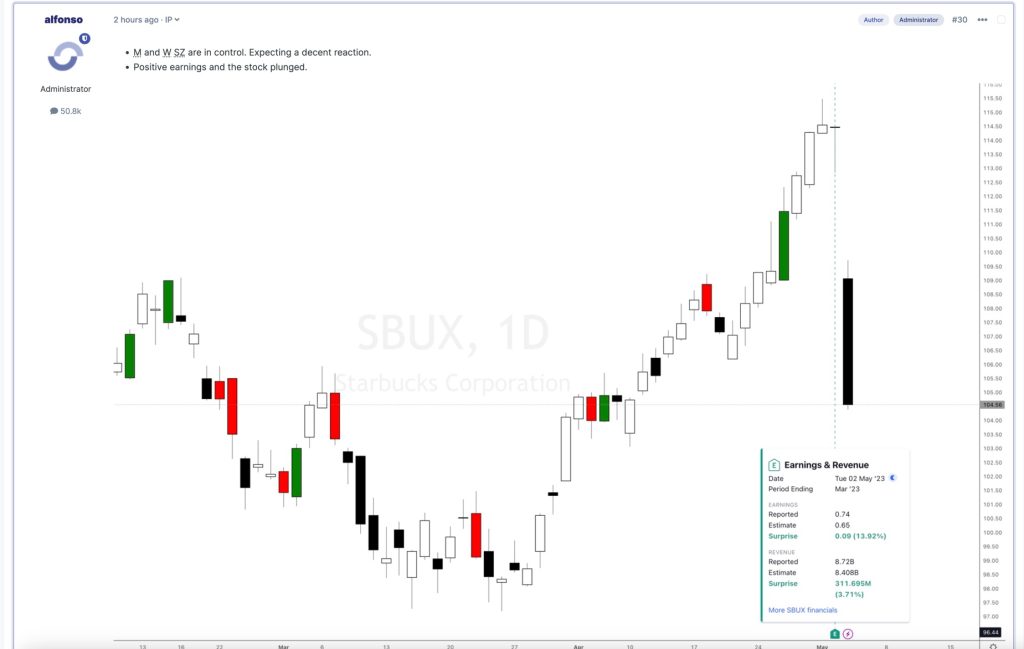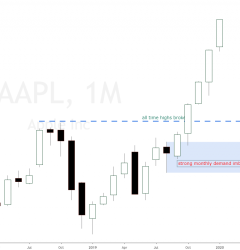03 May

Are you one of those stock investors eagerly awaiting the release of a company’s earnings report, hoping to make quick profits? Well, here’s a secret: stock earnings releases can be unreliable performance indicators. That’s right! Despite all the hype surrounding these stock reports, they are far from foolproof. In this supply and demand stock analysis, we’ll dive deep into why relying solely on earnings releases to gauge stock performance is not always wise and what other factors you must consider for making sound investment decisions. So buckle up and get ready for some eye-opening insights!
What are Stock Earnings Releases?
A stock earnings release is a document that public companies use to announce their quarterly or annual financial results. The release is typically accompanied by a conference call with analysts, during which management discusses the results and takes questions.
While earnings releases are intended to provide investors insight into a company’s performance, most investors and traders think they can be unreliable indicators of future stock price movements, but it’s not always the case. This is because companies often manage expectations prior to releasing their results, and the results themselves can be subject to interpretation. In addition, analysts’ forecasts can be wide of the mark, and share prices may have already moved in anticipation of the release.
Something is always missing in these stock earnings releases: a thorough supply and demand stock analysis. This is what we do at Set and Forget online trading academy. You will see why I am referring to this type of stock analysis in the example below on Starbucks Inc. stock.
For these reasons, it’s important to take stock earnings releases with a grain of salt and to consider them in the context of other information about the company before making investment decisions.
Why Are Earnings Stock Releases Unreliable Indicators of Performance?
There are several reasons that stock earnings releases can be unreliable performance indicators. For one, companies often give overly optimistic or pessimistic guidance to manage expectations. This can lead to investors buying or selling based on inaccurate information.
Another reason is that companies often report one-time items that can distort the true picture of their financial health. For example, a company might report a large one-time gain from the sale of a division that isn’t representative of its overall performance.
Stock earnings releases can be subject to revision after they’re initially released. This means that the numbers investors base their decisions on may not be accurate.
Unfortunately, the most important of these performance indicators are price action analysis and supply and demand imbalances. None of these two factors is ever used by stock analysts when submitting their forecasts and analyses for a particular stock.
See the supply and demand stock analysis for Starbucks Inc. (NASDAQ: SBUX) below. The stock plunged sharply today, Wednesday, 3rd May 2023, even as analysts raised price targets following a stronger-than-expected second-quarter report delivered late Tuesday. Why? Per the supply and demand technical analysis, there is a monthly downtrend, and a strong supply imbalance sitting at $110 per share is in control. We should not buy shares of Starbucks stock in a monthly downtrend and with a strong imbalance in control. That’s supply and demand 101.

Having such a strong supply imbalance in control, we expect the stock to plunge sooner or later. The earnings release is usually a catalyst that helps the stock move in the direction of the trend and the imbalance that took control. In this case, we expect a bearish correction, and a positive news release could cause the opposite effect. And that’s precisely what happened with Starbucks stock today after the earnings release.
The chart below is a screenshot shared today with Set and Forget online trading academy, as is the monthly chart above. The Seattle-based coffee megalith operates more than 36,000 stores worldwide. It has established itself as a titan in the coffee roasting and retail space. But it has recently been dealing with turbulence. But positive earnings of +3.71% and the stock plunging more than 8% do not make sense unless you know the monthly downtrend and the strong supply imbalance in control in Starbucks stock.

Factors That Affect Earnings Releases
Several factors can affect the reliability of stock earnings releases as indicators of future performance. First, companies may release earnings below analyst expectations to try and manage expectations for future quarters. This can lead to investors overreacting to the release, resulting in inaccurate predictions about future performance. This is also why knowing where the strong supply and demand imbalances are is necessary, as you can see in Starbucks’s monthly timeframe price action analysis above.
Second, companies may use accounting gimmicks or one-time items to inflate their earnings in a particular quarter. This can make it difficult to compare earnings across quarters or years and can again lead to inaccurate predictions about future performance.
Third, even if a company meets or beats analyst expectations, other factors may affect the stock price that is not reflected in the earnings release. For example, if a major competitor announces layoffs, this could impact the stock price even if the company’s own earnings were strong.
Stock investors must know these factors and the strong, bigger timeframe imbalances when predicting future stock performance based on earnings releases. Companies often give guidance along with their release, which can help investors interpret the results in context. However, ultimately it is important to do your own research and not rely too heavily on any one indicator when making investment decisions.
Different Methodologies and Strategies to Analyze Stocks
There are many different ways to analyze stocks. The most common method is fundamental analysis, which looks at a company’s financial statements to determine its value. However, other methodologies can be used to get a more complete picture of a company’s performance. That’s what we teach at Set and Forget online trading academy. The supply and demand course will help you understand why these movements happen.
Technical and price action analyses are alternative methodologies that look at past and current price movements and candlesticks to predict future trends. This approach is very useful in spotting potential turning points in the market. The supply and demand trading methodology can locate turning points with laser-beam accuracy in all markets and timeframes.
It’s important to remember that no single approach is perfect and that all methodologies have their own advantages and disadvantages.








